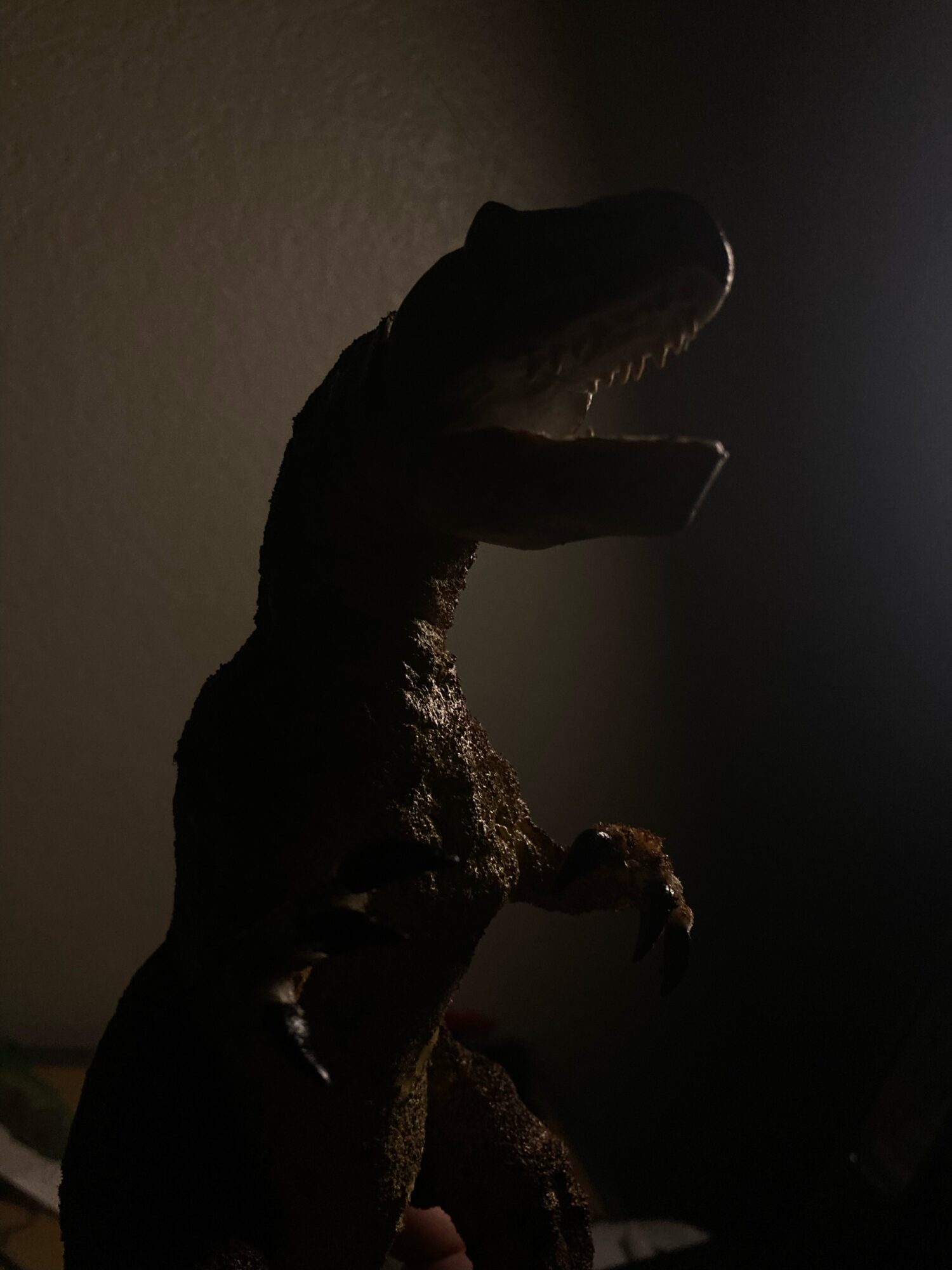Hello everyone! This project has ended up being a lot of fun for me, and I’m excited to share what I’ve come up with. From the very start of class, when I learned that the parameters for the final project were basically gonna be ‘make whatever you want’, I knew I had an opportunity to take on a project I’ve always wanted to do: making my own stop motion puppet. I’ve been a fan of stop motion for a long time, having grown up watching lots of classic monster movies from the 50s. And as a kid, my usual response to falling in love with an art form was to immediately try and do myself. Over the years, I’ve built several of my own slapdash stop motion armatures, some of which are even still in one piece:

All of these armatures were built mostly with materials I could find around the house or get at the local Michaels – not really optimized for making a functional, durable armature. As proud as I was of all of these, I was always afraid to commit to the next step and build a full body around the armature, afraid that the parts I was using would break immediately. So with this class, knowing we were expected to spend a fair amount of money on the final project, I decided this was the perfect opportunity to go all in on getting actual stop motion supplies and seeing a puppet through to the end.
For my aesthetic of choice, I wanted my puppet to be a dinosaur in the style of classic paleoart and creature feature films. The history of paleoart is really interesting because of its relationship to science: the paleoartists of any given era try to create depictions that are as accurate to the current scientific understanding as possible. However, scientific understanding can change extremely fast, especially when we’re talking about a field as theoretical as paleontology, so artistic depictions of dinosaurs have evolved significantly since the old days. In this sense, outdated paleoart tends to have a unique aesthetic in and of itself – no longer accurate to modern research, visually distinct enough from our current mental image of dinosaurs to stand out. With my project, I kind of wanted to bridge the gap between classic and current paleoart – to capture the general aesthetic of old-timey dinosaurs while including some details that were often left out back in the day.

For my initial project sketches, I wanted to be able to plan out beforehand the measurements I’d need for the armature I was going to build. Fortunately, the website that I ended up buying my armature components from, animationsupplies.net, provided scale diagrams of their armatures that I could use to plan out my own:

With this diagram, I planned out how I would reconfigure the human proportions of animationsupplies’ armature kits into that of a dinosaur: adding joints to the neck, including a tail and claws, resizing the legs to fit a dinosaur’s anatomy. My dinosaur of choice was an Allosaurus, a large theropod with distinct features that make it stand out from the more popular T. rex – and which happened to live right here in Colorado. With my design plan in place, I was ready to order my supplies and get into the fabrication process. Tune in next time to see it all come together!
- The Valley of Gwangi (1969), dir. Jim O’Connolly, animation by Ray Harryhausen
- Professional Armature Kit. https://animationsupplies.net/professionalarmature.html


2 Comments. Leave new
Sean, this project is absolutely awesome! I haven’t been following your work on this until this week but this is such a cool project idea. I am excited to see how some actual stop motion of this dinosaur would look. Also, how will you do the video editing electronically and how will you develop your aesthetic through this?
Great work on this project Sean! It is clear to see this is something you are passionate about, and it definitely translated into your work. I was wondering how specifically you achieved the mixed aesthetic you were trying to achieve? I am excited to see how it all turned out!